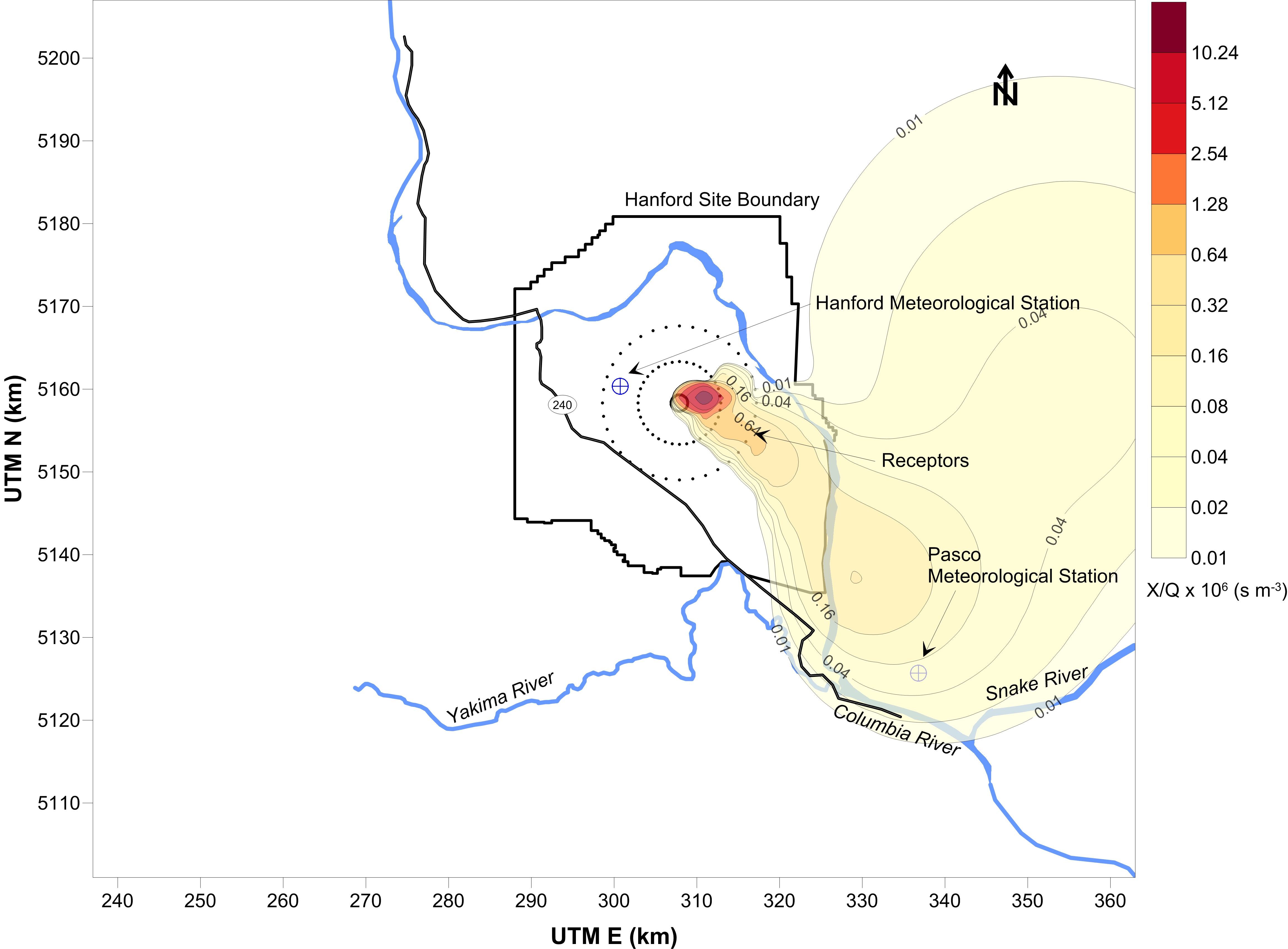 RAC was contracted by U.S. Department of Energy to investigate the default deposition velocity used in the MELCOR Accident Consequence Code System (MACCS) as applied to a safety analysis of the Waste Treatment and Immobilization Plant at the Hanford Reservation. As part of this investigation, RAC compared the MACCS atmospheric transport model (a Gaussian Plume Model) with Lagrangian puff atmospheric transport models that are capable of assessing transient releases in a spatially variable meteorological wind field. RAC was invited to present their findings to the Defense Nuclear Facilities Safety Board.
RAC was contracted by U.S. Department of Energy to investigate the default deposition velocity used in the MELCOR Accident Consequence Code System (MACCS) as applied to a safety analysis of the Waste Treatment and Immobilization Plant at the Hanford Reservation. As part of this investigation, RAC compared the MACCS atmospheric transport model (a Gaussian Plume Model) with Lagrangian puff atmospheric transport models that are capable of assessing transient releases in a spatially variable meteorological wind field. RAC was invited to present their findings to the Defense Nuclear Facilities Safety Board.RAC concluded that the default deposition velocity used in MACCS was too high, but other conservatisms in the atmospheric transport model more than compensated for the difference in doses using a lower deposition velocity.
Publications
J.E. Till, A.S. Rood, C.D. Garzon, and R.H. Lagdon. 2014. “Comparison of the MACCS2 Atmospheric Transport Model with Lagrangian Puff Models as Applied to Deterministic and Probabilistic Safety Analysis.” Health Physics, 107, 213-230.
